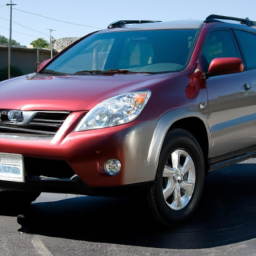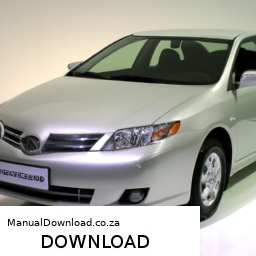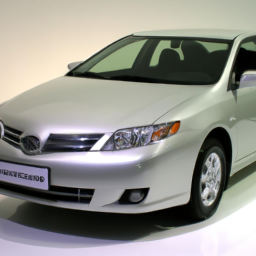
Replacing the sway bar links on a Toyota Land Cruiser Prado involves several steps. click here for more details on the download manual…..
- WHEEL BEARINGS INFORMATION – AVOID PROBLEMS – THEN TYRE REVIEW / FEEDBACK Firstly some information to do with front wheel bearings on any vehicle avoid over loading them when pressing them. Use the talk …
- CHANGING FRONT WHEEL BEARINGS ON FRONT LANDCRUISER PRADO DRIVERS SIDE Toyota Prado front bearing replacement LC120 LC150 same job. Fourby4diesel Buying new front wheel bearings Changing the …
Below is a detailed guide presented in bullet points, which includes the tools required and step-by-step instructions.
### Tools and Materials Needed:
– **Socket set**: Includes metric sockets (typically 10mm, 14mm, and 17mm)
– **Ratchet and extension**: For reaching tight spots
– **Wrench set**: Open-end and box-end wrenches for various bolt sizes
– **Torque wrench**: Ensures bolts are tightened to the manufacturer’s specifications
– **Pry bar or flathead screwdriver**: To help in displacing components if necessary
– **Jack and jack stands**: To lift the vehicle safely
– **Wheel chocks**: Prevents the vehicle from rolling
– **Lubricant (WD-40 or similar)**: To loosen rusted or stuck bolts
– **Replacement sway bar links**: Ensure they are compatible with the model year of your Prado
– **Safety goggles and gloves**: To protect yourself during the process
### Step-by-Step Replacement Instructions:
– **Preparation**:
– Park the vehicle on a level surface and engage the parking brake.
– Place wheel chocks behind the rear wheels to prevent movement.
– **Lifting the Vehicle**:
– Use a jack to lift the front of the vehicle, then secure it with jack stands.
– Ensure the vehicle is stable before proceeding.
– **Removing the Wheel**:
– Use a lug wrench to loosen and remove the lug nuts on the front wheels.
– Take off the wheel to expose the suspension components.
– **Locating the Sway Bar Links**:
– Identify the sway bar links, which connect the sway bar to the suspension components (usually the control arm).
– **Inspecting Existing Links**:
– Check for signs of wear, such as cracks or excessive play in the bushings. This will confirm the need for replacement.
– **Loosening the Bolts**:
– Apply lubricant to the sway bar link bolts if they appear rusted or stuck.
– Use the appropriate socket and ratchet to loosen the top and bottom bolts of the sway bar link. Hold the other side with a wrench if necessary to prevent it from spinning.
– **Removing the Sway Bar Link**:
– Once the bolts are removed, carefully pull the sway bar link out from the sway bar and control arm.
– **Preparing the New Sway Bar Link**:
– Compare the new sway bar link to the old one to ensure they are identical in length and design.
– If the new link comes with new bushings or washers, ensure they are installed as per the manufacturer’s instructions.
– **Installing the New Sway Bar Link**:
– Position the new sway bar link in place, aligning it with the sway bar and control arm.
– Install the bolts by hand to avoid cross-threading, then tighten them with a socket and ratchet.
– **Torque Specification**:
– Use a torque wrench to tighten the sway bar link dispose of any old parts responsibly.
Following these steps will help ensure a successful sway bar link replacement on your Land Cruiser Prado. Always refer to the vehicle’s service manual for specific details and torque specifications for your model year.
A Constant Velocity (CV) joint is a crucial component of a vehicle’s drivetrain, primarily found in front-wheel drive and all-wheel drive vehicles. Its primary function is to transmit torque from the engine to the wheels while allowing for the necessary movement of the suspension. The CV joint enables the wheels to turn at different angles while maintaining a constant rotational speed, which is essential for smooth handling and stability, especially during turns.
There are two main types of CV joints: the ball-type and the tripod-type. The ball-type CV joint is typically used on the outer end of the axle, where the wheel connects, while the tripod-type is generally found on the inner end, connecting the axle to the transmission. The ball-type joint consists of a spherical outer casing with several balls that allow for flexibility in various directions, while the tripod joint features three prongs that fit into a socket, providing angular movement.
One of the key advantages of CV joints is their ability to handle significant angles without losing power transfer efficiency. This is particularly important in vehicles with independent suspension systems, where wheel movement can vary greatly. Over time, CV joints can wear out or become damaged, often indicated by clicking or popping noises during turns. Regular inspection and maintenance are essential to ensure their longevity and the overall performance of the vehicle, as a failing CV joint can lead to more severe mechanical issues and safety concerns.

 and Materials**
and Materials**
 and amount of transmission fluid.
and amount of transmission fluid.
 and leak-free.
and leak-free.